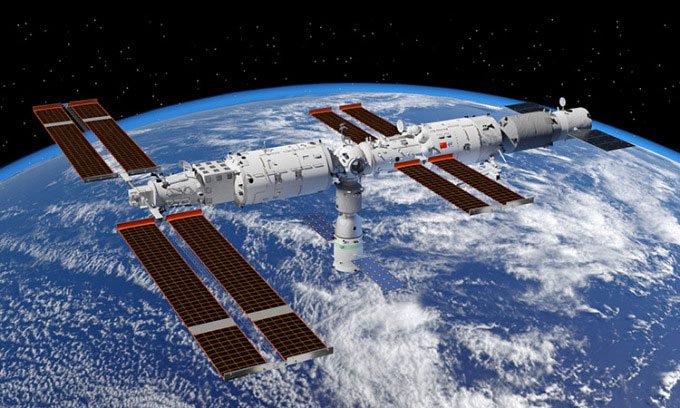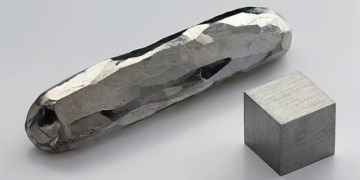The Shenzhou-14 crew aboard the Tiangong space station can now produce over 90% of their drinking water through a recycling process.
This means that the astronauts only require less than 10% of their water supply from Earth. The recycling is facilitated by the environmental control and life support system installed in the space station, which includes six corresponding subsystems for producing oxygen through water electrolysis, removing carbon dioxide, eliminating toxic gases, treating urine, processing water, and generating water from carbon dioxide and hydrogen.

Simulation of the Tiangong space station in orbit. (Photo: CMSA)
According to the China Manned Space Agency (CMSA), the system can collect the sweat and urine of astronauts, filter them into drinking water, and simultaneously generate oxygen by electrolyzing recycled water.
A subsystem that produces water from carbon dioxide and hydrogen – the most advanced version – has also been installed in the Tiangong station and tested by the Shenzhou-14 crew with support from the ground team. It can help recycle an additional kilogram of water each day, increasing the percentage of drinkable water produced through recycling from 80% to over 90%.
As a key technology for China’s crewed missions, the life support and environmental control system has ensured the safety of astronauts in orbit and contributed to building a habitable space station, CMSA emphasized.
The system can adjust air pressure, oxygen levels, wind speed, temperature, and humidity inside the spacecraft to create an Earth-like living environment in space. It also reduces cabin noise through sound-absorbing panels, acoustic insulation, dampers, and shock-absorbing pads.
CMSA is researching next-generation recycling technologies, including food recycling, to maximize the reuse of materials on the station in the future, the agency added.





















































